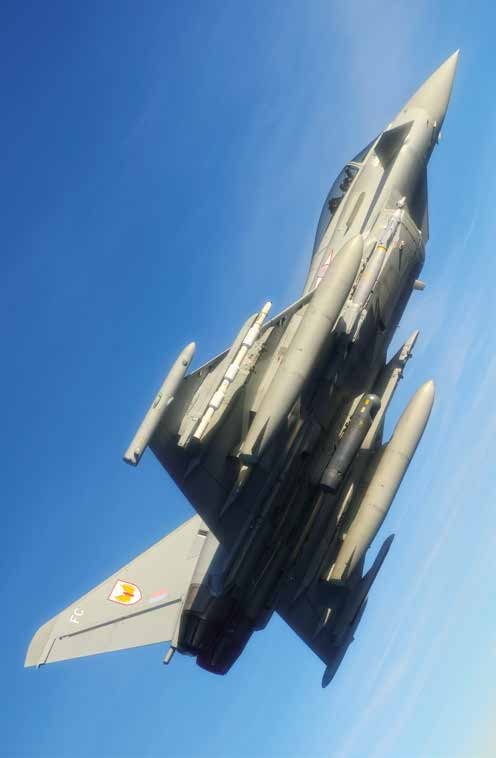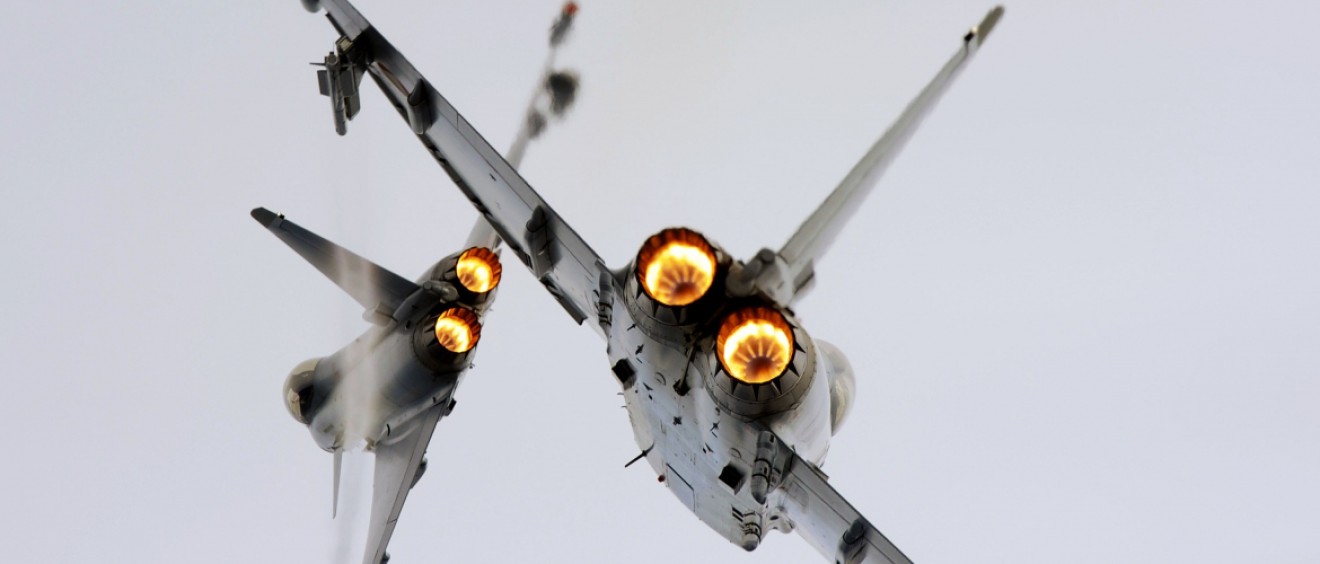RAPID UPDATES:
From the standard that was delivered in January 2019, there are already a significant number of refinements on top of what the squadrons are currently operating in theatre. These incremental updates affect Paveway IV, Meteor, AMRAAM and Brimstone. It’s a rapid change programme that’s being delivered at an unprecedented rate. Other updates are continually being made to the Human Machine Interface (HMI). For pilots the really big step change was when they moved from the P1E standard to the P2E standard; but the change from P2E to the P3E feels smaller because we have already implemented significant changes to the HMI. These changes are being further developed and refined, in order to allow us to springboard to the next stage.
LITENING V:
A new standard of targeting pod — Litening V — is being integrated onto the aircraft which follows on from the current Litening III. It’s being introduced to counter the increased threats that require operating at a greater standoff range to the target area and which require the best possible sensors. Litening V is also useful for night operations when its technological superiority can be best leveraged. The better the sensors, the better the image quality and the easier it is for the pilot to operate effectively in the darkness. The other evolutionary benefit of the new pod is processing power. As well as providing enhanced tracking of multiple moving ground targets, it can also be used for tracking multiple air tracks. This aspect is becoming more and more relevant as we move into a more congested, contested and low observable battlespace.
EXISTING WEAPON UPDATES:
Several weapons that have been on the aircraft for some time, like ASRAAM, are being updated to counter the proliferation of threats and the advancement of countermeasures available. This will make a real difference to the air forces.

SENSOR IMPROVEMENTS:
Over the next three to five years there will be big changes to all sensors. This will include E Scan, and PIRATE — the Passive Infrared and Tracking Equipment. The latter is a forward-looking infrared (FLIR) and infrared search and track (IRST) device, which allows pilots to work day or night. It’s able to track multiple targets passively, which is a key requirement for the future environment.
COCKPIT INFORMATION:
As sensors improve then so too does the information coming into the cockpit. The operational task for pilots, especially at night in an ambiguous environment, is a real challenge, and it’s important that we make the aircraft as easy to operate as possible. We are constantly looking at how we can alleviate some of the pressures faced by pilots. For example, we can offload some of the tasks and improve the tracking performance through Litening V because the pilot would no longer have to manually manipulate the pod.
STRIKER II HELMET:
One of the key enablers to leveraging the new sensor and weapons capabilities is the Striker II helmet. RAF pilots are currently working with BAE Systems on its development. It fuses the head down colour imagery of the Human Machine Interface (HMI) and night camera capability, allowing the pilot to look out of the cockpit rather than down at screens — thus building their situational awareness.
CAPABILITY AND TRAINING:
There has been significant improvement over the last two years in the HMI. At the same time new design standards, allowing the aircraft operation to be more intuitive, have been introduced. Standardising everything in the cockpit should allow pilots to sit in the cockpit and operate it with relative ease and, as new capabilities are introduced, they will quickly appear familiar to the pilots.
ROBUSTNESS AND AVAILABILITY:
Forces need an aircraft that’s always available and always works, day in, day out. They don’t just want that level of availability in operations, they want it in front line training every day. Earlier this year the Eurofighter consortium supported the German Government and Airbus during the evaluation phase of Switzerland’s ongoing assessment for a new combat aircraft. We took two of the latest standard aircraft to Switzerland and they were flown two or three times, day and night, for two weeks. We used no spares and the aircraft were available on time for every single sortie. Maintaining this level of availability, while continuing on the development journey, is crucial.
